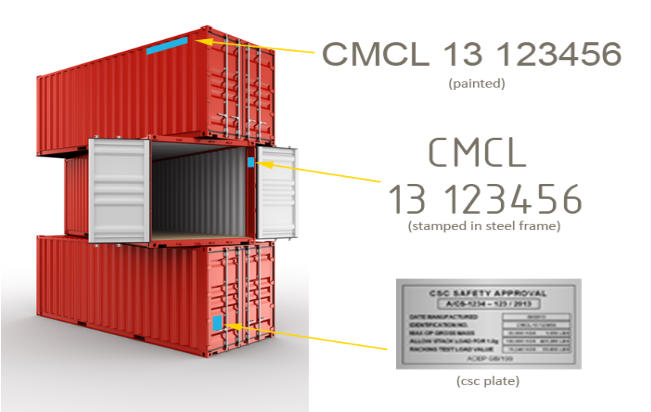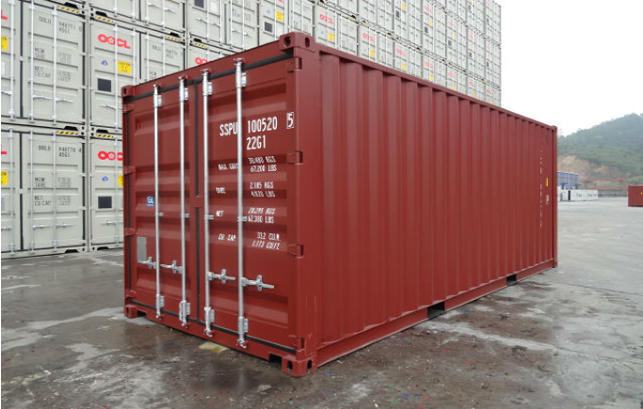The Box That Changed The World!
ISO Shipping Containers
An ISO shipping container is a steel module which has been constructed according to ISO manufacturing standards (ISO/TC 104/SC 1) in compliance with standards set forth by the International Maritime Organization (IMO) study which began it’s initial review in 1967.

The beginning of the Containerization boom...
At that time, the ISO Container was expected to be used only for the purpose of shipping. Therefore, the IMO began a research project to create some type of standardized “engineering certification” for these new ISO Containers globally.
Following years of dedicated research, the results were presented to the influential bodies of the United Nations and IMO. Their joint consideration and adoption of the draft marked a significant milestone in the history of shipping, leading to the formation of the Conference for Safe Containers (CSC) in 1972

Lower portion of CSC Plate for ISO Containers (ISO/TC 104/SC 1)
Thus, the creation of the CSC plate, which certifies the Shipping Container or ISBU module, was legally inspected by a certified Engineer at the factory-of-origin and fully complies with the ISO/TC 104/SC 1 standards set forth by the IMO and approved by the United Nations according to the 1977 Convention.
No matter what an ISO Container is used for, the CSC Plate guarantees the “ISO steel module” is safe and fully certified by a qualified Engineer at the factory-of-origin according to International standards and regulations. No other documentation is necessary. Its certificate (CSC-plate) travels globally with it.
Each ISO Container is given its unique identification number (ID), also called a Container Identification Number (CIN). The CIN is located in various areas of the ISO Container.

Example- CSC plate ID number: CMCL 13 123456
NOTE: The above CSC-plate is only the lower half of the actual CSC-plate. The actual CSC plates vary slightly in design from decade to decade. Additionally, the CSC plate was changed slightly on all units soon after 2014.
The CIN serial number stamped inside of the ISO Containers is also the same number as the Manufacturers Identification Number (ID) as seen on the CSC plate photo above.
The ISO Container can now be used for any purpose and can be safely shipped by sea, land, or rail without restriction.
The CSC certificate/plate is valid for five (5) years unless the ISO Container becomes damaged. In such cases, the container can be properly repaired and then re-certified by a qualified CSC Inspector in any country worldwide. The role of the CSC Inspector is crucial in ensuring the safety and reliability of ISO Containers.
Shipping Containers have many names, which can be confusing. When an ISO shipping container is used solely for the purpose of shipping it can have seven main names.
• Shipping Container
• ISO Container
• Container
• Box
• Cargo Container
• Conex Box (Container Express)
• Maritime Container

Maritime type of ISO Container
When an ISO Shipping Container is used solely for building construction or storage it is then referred to as an ISBU module--it’s technical name.
• ISBU
• ISBU module
• Intermodal Steel Building Unit
• ISO Container
• GreenCube

ISBU type of ISO Container
ISO shipping containers are standard shapes and sizes manufactured in only a few countries of the world, principally China, a few other Asian countries, and some areas in Europe.
From The Factory To You - CSC-Plates
Because ISO Containers are manufactured in only a few countries, they must either be shipped somehow or used for shipping.
Whether the steel ISO Containers are used for maritime shipping or as ISBU construction modules, they must be shipped as soon as they are manufactured. To be shipped, they must all be certified at the factory and possess the CSC plate. Without the certification plate, no ISO Container can be transported anywhere.
It's obvious that Containers used for maritime shipping will automatically have the CSC inspection. Equally, suppose ISO Containers are ordered specifically for construction projects to use as ISBU modules. In that case, they must also obtain the CSC inspection and plate for the shipping journey to their destination, even if they don't carry cargo.
Therefore, all ISO Containers are manufactured with a CSC-plate, which documents the Engineer's certification, even if they are not explicitly used for shipping cargo.
ISBU is from the name Inter-modal Steel Building Unit. Intermodal Steel Building Unit.
An ISBU is an ISO Container used for the purpose of storage and construction. An ISBU can also be a shipping container that is no longer used for shipping.
Since 2006, Shipping Containers have become very popular and trendy for use as home, storage, prefab, and business construction purposes.
If an ISBU module still qualifies for CSC inspection, it can also be shipped via rail or ocean.
The US Military first created the term ISBU in the early 1970’s to more easily distinguish the difference between an ISO Container for maritime shipping or for an ISO Container for the use of storage units, military housing, or other construction projects. The term ISBU makes that distinction.
Since 1964, the principal use for Shipping Containers was for International ocean shipping, truck or train freight, and occasional secure storage. Only recently has the world begun to realize the value of an ISBU in housing, office construction, storage, and emergency shelters. The possibilities are virtually endless.
An ISBU can be a used Shipping Container when shipping companies no longer need them, or, an ISBU can be manufactured new, as an ISO Container, specifically for use as an ISBU construction module.
The common shipping containers and ISBU modules are 20' and 40' dry containers and the shipping industry refers to all containers and statistics as TEU, meaning Twenty Foot Equivalent Unit (TEU).
A 20’ container is referred to as 1 TEU
A 40’ container is referred to as 2 TEU
Other container sizes are certainly available, such as 6', 8', and 10' mini containers, as well as larger 45' 53', Open-end, Open-side and Reefer containers.
These are less popular but available.
RELATED:
The Difference between GP and HC shipping containers
ISO Container specifications and dimensions
History Of Shipping Containers
Benefits Of Container Technology
Shipping Container Drawings